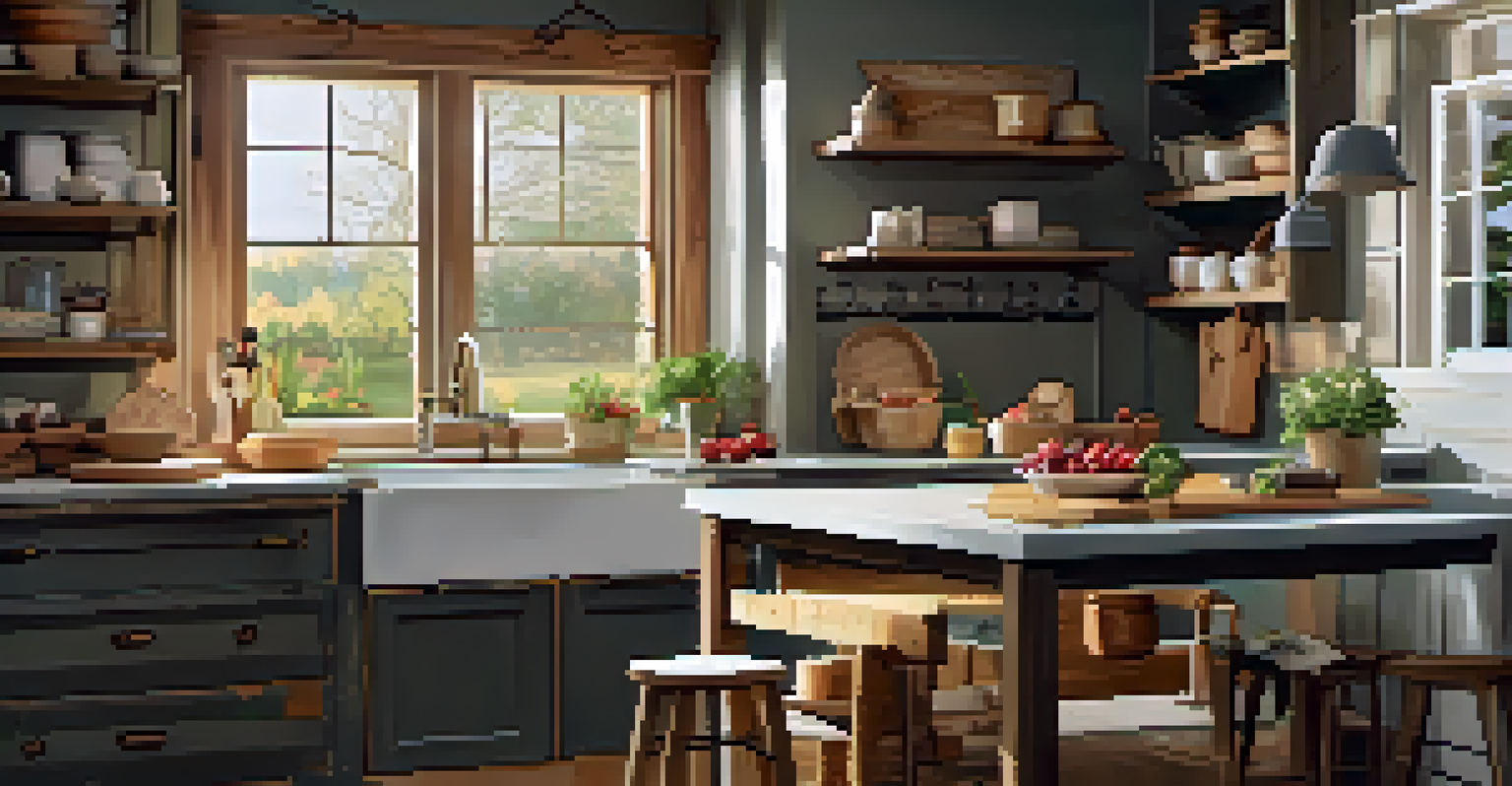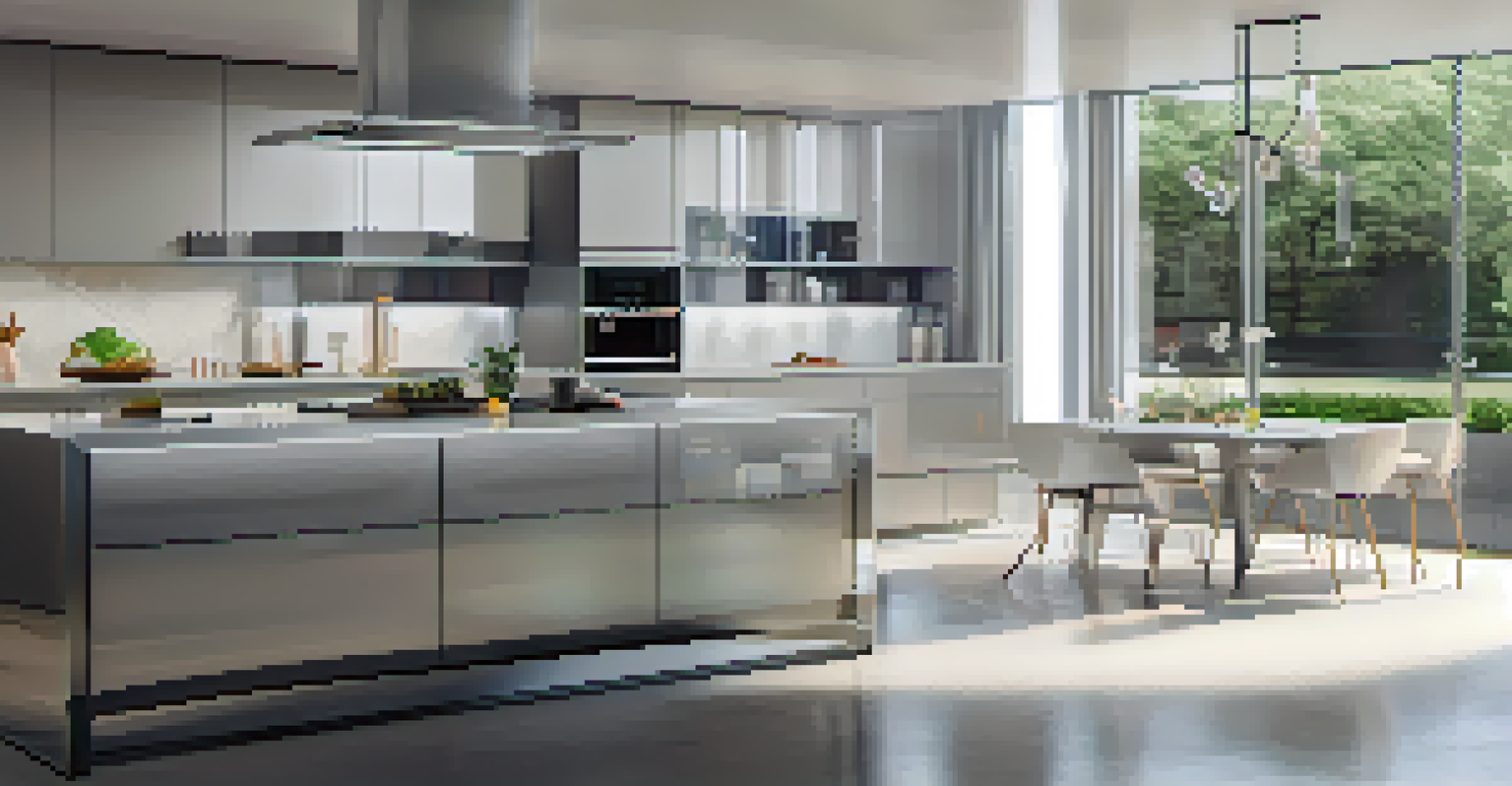Failing to Create a Functional Kitchen Design

Understanding the Importance of Kitchen Design
A kitchen is often considered the heart of the home, where meals are prepared and memories are made. This space needs to be functional to enhance not just cooking but also daily interactions. When the design lacks functionality, it can lead to frustration and inefficiency, impacting your overall experience in the kitchen.
The kitchen is the heart of the home, and it should be a reflection of our lifestyle and personality.
Imagine trying to cook a meal in a cramped space where everything is out of reach. It’s not just inconvenient; it can also be unsafe. A well-thought-out kitchen design ensures that you have enough space to move around, access tools easily, and store ingredients efficiently.
Therefore, understanding the importance of creating a functional kitchen design is crucial. It sets the foundation for a space that meets your cooking needs while also accommodating family gatherings and entertaining guests.
Common Mistakes in Kitchen Layout Design
One of the most common mistakes in kitchen layout design is neglecting the work triangle. This principle involves the optimal placement of the stove, sink, and refrigerator to allow for efficient movement. If these elements are too far apart, it can make cooking a cumbersome task.

Another frequent oversight is inadequate storage space. A cluttered kitchen is not only frustrating but can also lead to accidents. Ensuring you have sufficient cabinets and drawers to store pots, pans, and utensils will keep your workspace organized and functional.
Kitchen Design Enhances Functionality
A well-planned kitchen design optimizes space and usability, making cooking and entertaining more enjoyable.
Lastly, ignoring the flow of traffic in your kitchen can lead to chaos, especially during busy meal prep times. Designing your kitchen with clear pathways allows multiple people to work simultaneously without bumping into one another.
Neglecting Personal Needs in Kitchen Design
Every household has unique cooking habits and preferences, yet many designs overlook these personal needs. For instance, if you love baking, having a dedicated area with ample counter space is essential. Failing to account for these specific requirements can render the kitchen less enjoyable to use.
Good design is a lot like clear thinking made visual.
Additionally, considering the height of the users can significantly impact functionality. For example, countertops that are too high or too low can strain your back and make cooking a chore. Tailoring the kitchen to fit the family's needs enhances comfort and efficiency.
In essence, personalizing your kitchen design according to your cooking style and the needs of your household can make a world of difference. This approach ensures that the space is not just functional but also a joy to use.
Overlooking Lighting and Ventilation Needs
Lighting and ventilation are often an afterthought in kitchen design, yet they play a crucial role in functionality. Poor lighting can make it challenging to see what you're doing, leading to mistakes during meal preparation. A well-lit kitchen, on the other hand, enhances safety and efficiency.
Moreover, proper ventilation is essential, especially when you're cooking with strong-smelling ingredients or using high-heat methods. Without adequate exhaust systems, smoke and odors can linger, making your kitchen uncomfortable. This can also lead to lingering smells in adjacent rooms.
Personal Needs Shape Kitchen Layout
Tailoring your kitchen design to fit unique cooking habits and user heights improves comfort and efficiency.
Investing in both natural and artificial lighting, along with a good ventilation system, can elevate your kitchen's functionality. It creates a pleasant cooking environment that encourages you to spend more time in this vital space.
Ignoring the Importance of Quality Materials
When designing a kitchen, the materials you choose can significantly affect its functionality and longevity. Using low-quality materials might save money upfront but can lead to costly repairs and replacements down the line. For instance, countertops that easily chip or stain can hinder your cooking experience.
Selecting durable materials also contributes to the overall aesthetic of your kitchen. A beautiful kitchen encourages you to spend more time cooking and entertaining, making it a worthwhile investment. High-quality cabinets and flooring can enhance both style and function.
Thus, it's vital to consider the long-term benefits of investing in quality materials. They not only improve the kitchen's functionality but also ensure that your space remains inviting and practical for years to come.
The Role of Technology in Kitchen Design
In today's world, incorporating technology into kitchen design can greatly enhance functionality. Smart appliances can streamline cooking processes, making meal preparation faster and easier. For example, a smart oven can preheat itself remotely, saving you valuable time.
Moreover, technology can also aid in organization. Smart storage solutions that track inventory levels can help you keep your kitchen clutter-free and ensure you never run out of essentials. This integration simplifies your cooking routine, allowing you to focus on creativity rather than logistics.
Quality Materials Ensure Longevity
Investing in high-quality materials not only enhances functionality but also maintains the kitchen's appeal over time.
Ultimately, leveraging technology in your kitchen design can create a more efficient and enjoyable cooking experience. By merging modern conveniences with classic design principles, you can optimize functionality without sacrificing style.
Failing to Plan for Future Needs
Another pitfall in kitchen design is failing to plan for future needs. As families grow or change, your kitchen should be able to adapt. For instance, if you plan to have children, incorporating safety features and accessible storage becomes essential for a functional kitchen.
Additionally, considering future trends and technologies can help you avoid a design that feels outdated in a few years. A flexible layout that allows for modifications can make your kitchen a lasting asset in your home.

Planning for the future means thinking ahead and ensuring your kitchen remains functional and relevant as your needs evolve. This foresight can save you time and money in the long run while keeping your kitchen a welcoming space.